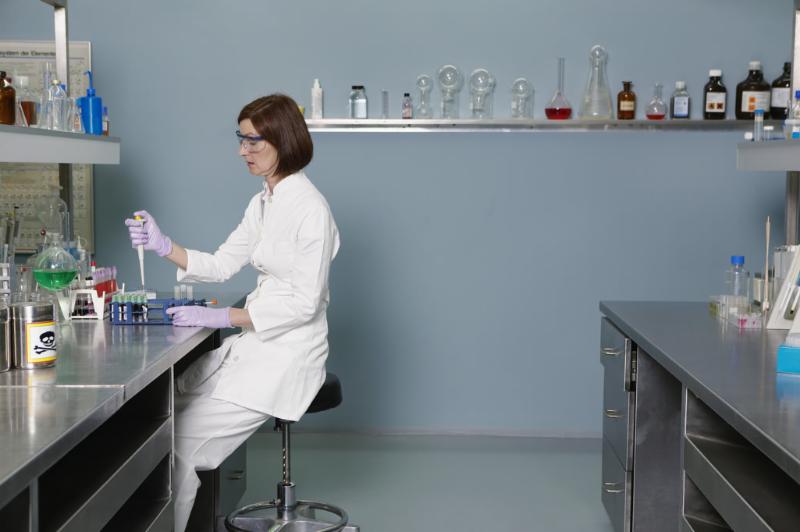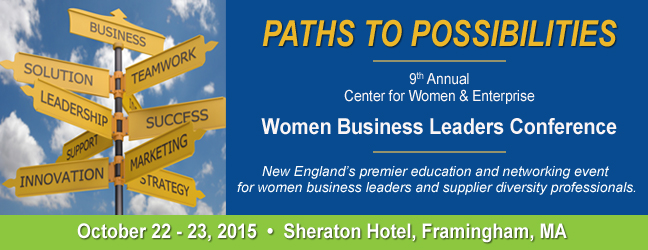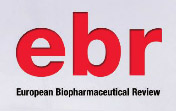|
 |
Welcome to BioMarketing Insight's monthly newsletter.
We have a new mobile friendly newsletter. Love to receive your feedback.
Last month I covered "President Obama's Precision Medicine Initiative: Is this feasible?" If you missed last month's article, click here to read it. This month we'll cover, CVS: New Business Model to Become a Healthcare Company.
Read on to learn more about this topic, other current news in the Table of Contents below and previous newsletters. The next newsletter will be published on November 15th.
We encourage you to share this newsletter with your colleagues by using the social media icons at the top, or by simply forwarding this newsletter or use the link at the bottom of this newsletter. Should you or your colleagues want to join my mailing list, click on the icon below or scan the QR code.
Please email me, Regina Au, if you have any questions, comments, or suggestions. Sincerely, Regina Au New Product Planning/ Strategic Marketing Consultant
|
|
Join our mailing list for mobile
| |
|
|
|
Developing a Product?  Commercializing a Product?
| |

If you are developing a product and have not conducted the business due diligence to determine commercial viability or success, contact me for an appointment. For successful commercial adoption of your product or looking to grow your business, contact me for an appointment.
For more information on our services, click on the links below:
Product Development
Market Development
Marketing Strategies
Top
|
Save the Date: Women Business Leaders  Conference - Oct. 22 - 23, 2015 Conference - Oct. 22 - 23, 2015 | |
 I am pleased to announce that I will speak at the Center for Women & Enterprise, 2015 Women Business Leadership Conference. My presentation will be on "You Don't Have to Do it Alone: How to Find Mentors, Advisers, and Other Resources," Friday, October 23, at 3:10 pm. For more information on the conference, click here. Top
|
Stem Cell Research: Under Investigation  | |
 I am pleased to announce that my article "Stem Cell Research: Under Investigation has been published in the July 2015 issue of European Biopharmaceutical Review (EBR). To read an electronic version, click here and go to page 30. Top |
From Genetic Engineering to Genome Engineering: What Impact Has it Made on Science and Society? Engineering: What Impact Has it Made on Science and Society?
| |
 I am pleased to announce that my article "From Genetic Engineering to Genome Engineering: What Impact Has it Made on Science and Society?" was published in May 2015 in the Advanced Biology, Biotechnology and Genetics Journal. To read an electronic version, click here. Top |
CVS: New Business Model to Become a  Healthcare Company. Healthcare Company.
| |

When we think of CVS, we think of a chain store pharmacy and convenience store, which was its original business model and it's been successful to the point where you see a CVS on nearly every corner, at least here in Massachusetts.
But CVS has over the past few years been slowly changing its business model to become a healthcare company and recently, that change has drawn attention.
Successful companies meet customer needs, by offering products and services that satisfy those needs. CVS executives came to realize the need for expanded pharmacy access as expanding work obligations made it difficult for pharmacy customers to find time to fill prescriptions during what had been traditional pharmacy business hours. In response, CVS pharmacy hours were extended into the evening, and weekend hours were offered as well. The retail part of the store came to routinely include Sundays, and now some CVS pharmacies are open 24/7.
Next, when flu reason came around and customers had difficulty getting an appointment with their primary care physicians (PCP), CVS opened Minute Clinics, where you can see a nurse for simple things, such as treating a cold or flu or getting a flu shot, without making an appointment and waiting days or weeks to see your PCP. Now, even CVS pharmacists administer flu shots and other vaccines as well.
CVS is also promoting wellness, encouraging customers to get flu shots, or making elderly customers aware and encouraging them to get the Shingles vaccines as a prevention against this frequently debilitating and painful disease. I can attest to this, having suffered through a bout of Shingles myself, which I wrote about in my September 2014 newsletters. Shingles is not something you want to experience and I got the vaccine because one can get shingles more than once.
In 2014, CVS changed their name from CVS Caremark to CVS Health, to reflect their image as a healthcare company. CVS also made a bold move and decided not to sell Tobacco at any of its stores, to be in line with their new business model of being a healthcare company. I'm sure they got push back from smokers and others who thought that CVS was throwing away $2B in revenue. But it didn't fit in with their healthcare business model and cigarette sales have been declining since the push towards a healthy life style. At least ten years ago, most restaurants and businesses ceased to allow smoking on their premises. CVS won't even carry e-cigarettes. But all is not lost, as CVS can make up this revenue in the health and wellness sector, which is growing.
CVS took an even bolder move in July of 2015, when the company resigned from the U.S. Chamber of Commerce after it learned the Chamber was engaged in global lobbying campaigns against anti-smoking laws. I have to applaud CVS for taking this position, because we all know that cigarette smoking can cause lung cancer in those who smoke and those exposed to second -hand smoke.
Globally, tobacco use is the most important risk factor for causing cancer -- approximately 20% of global cancer deaths and approximately 70% of global lung cancer deaths. It's the fifth most common cancer diagnosed in both men and women. According to the CDC, lung cancer due to cigarette smoking is the leading cause of cancer death and the second most common cancer among both men and women in the United States.
As a giant conglomerate, we need companies like CVS to take a stand for a healthier lifestyle and they are among the few who can successfully lobby and promote policies and laws that discourage smoking. From a PR view point, this not only puts CVS in a positive light with health conscious consumers/patients, but it also puts them in a positive light and relationship with insurers and federal government entities that are both trying to curtail healthcare costs.
In May 2015, CVS bought Omnicare for $10.4 billion, plus $2.3 billion in Omnicare debt, to expand its presence in the senior care market, which is growing, and to bolster its position as a healthcare provider. Omnicare has facilities in 47 states and it is the nation's largest provider of pharmaceutical services in nursing homes, with 160 locations in assisted - living and long-term care facilities. CVS also acquired all of Target's pharmacies in June 2015 for $1.9 billion when Target decided to divest this line of business, since it wasn't part of their core business strength. Today, CVS has 9,300 stores nationwide and has been able to forge affiliations with regional hospitals where it once could not, because of its sale of tobacco products.
Now that tobacco is gone, will CVS next replace candy bars and soda with healthier snacks? Customers have been inquiring about healthier foods since the decision to stop selling cigarettes. Like McDonalds and Burger King, they are in the process of offering healthier foods choices in over 500 high - volume stores. Their front-of-the-store, or non-prescription, business, has struggled in the post-tobacco era. So next to the check-out counters, which are prime real estate for products, CVS is displaying nutrition bars and other healthier items. CVS is not eliminating junk food, it's just no longer being displayed prominently.
"We weren't making it so easy to find health foods," Helena Foulkes, the President of CVS/pharmacy told Fortune. CVS is there to "nudge, not judge," Foulkes joked as she gave Fortune a tour of a new-look CVS store in Manhattan's Chelsea district. Some other facts that point to CVS being a healthcare company: 1) In 2014, CVS reported $140 billion in revenue, with about 97 % derived from prescription drugs or pharmacy services; 2) CVS is arguably the country's biggest healthcare company, bigger than the drug makers, wholesalers, and even insurers; and 3) They're also the nation's largest operator of healthcare clinics, dispenser of prescription drugs or pharmacy services, and the second largest pharmacy benefits manager.
Top |
Closing Thoughts  | |

We all know that since Obamacare, the healthcare/medical market is changing and to survive and thrive, companies need to change with the market and that is exactly what we are seeing with CVS. As a chain - store pharmacy they didn't ignore their customers' needs, which is how they came to offer a wide variety of products in their retail section to better create a one- stop shopping experience. As a result, company grew exponentially and along the way acquired enormous purchasing power., CVS could then afford to offer lower prices on a number of items, or have special discount programs for loyal customers. They eventually put the "mom and pop" shops out of business and grew even larger.
But as the other chain pharmacies followed CVS' model, competition became fierce, so CVS needed to come up with a strategy to set themselves apart from the rest in the mist of all the constraints of Obamacare. As a pharmacy, reimbursement for drugs is declining and only a small percentage of people will pay full retail price for drugs is not covered by insurance. Those without insurance either do not fill their prescriptions, or find another means of purchasing drugs---online from Canada, for example.
So the company either has to expand their customer base in terms of geography, demographics or products, which is what you are witnessing with the purchase of Target pharmacies, Omnicare for the elderly population in nursing homes, forming relationships with hospitals, since they are not selling cigarettes and the addition of other services such as pharmacy benefit management. And let's not forget the Minute Clinics, which are services traditionally reserved for the PCPs, but they are filling a void. That is CVS's strength--- seeing the gaps and filling them. Of course once they start something and it's successful, others will follow.
I wouldn't be surprised if CVS starts to acquire small pharma/biotech companies as an extension of being a healthcare company. It would seem to be a natural progression and they certainly have the resources to do so. Stay tuned for the next chapter of CVS.
Top
|
New Technology - 
"A Next-Level Smartwatch That Detects Seizures"
| |
|
| "Embrace," wristband to detect seizures
Source: Empatica
|
Rosalind Picard, Professor at the MIT Media Lab has been doing research since the 1990s on how to best measure emotion though sensors. She was interested in quantifying emotion, in particular the emotions of people with non-verbal autism. At that time, she had no idea that her tracking sensors for detecting electrodermal activity (EDA) would enable her to detect seizures.
One of her students took the sensors home to track the EDA levels of his brother, who is nonverbal and autistic, to see what was causing his stress. Picard tracked his activity remotely and noticed an abnormal spike in EDA on the right side of the body, but not the left. Thinking it was an error she called the student to find out what had happened. The student's brother had experienced a grand mal seizure 20 minutes after the massive spike in EDA. Picard also found that the sensors could correlate spikes in EDA to the flattening of brainwaves that happened after massive seizures. The bigger the spike in EDA, the longer the brain waves flattened. Since seizures could be detected through monitoring skin conductance, they decided to develop a bracelet to monitor and detect seizures.
To read the full story in Wired, click here. To listen to Picard's story in an interview with MassDevice, click here.
Top
|
|
|
 |
|
|